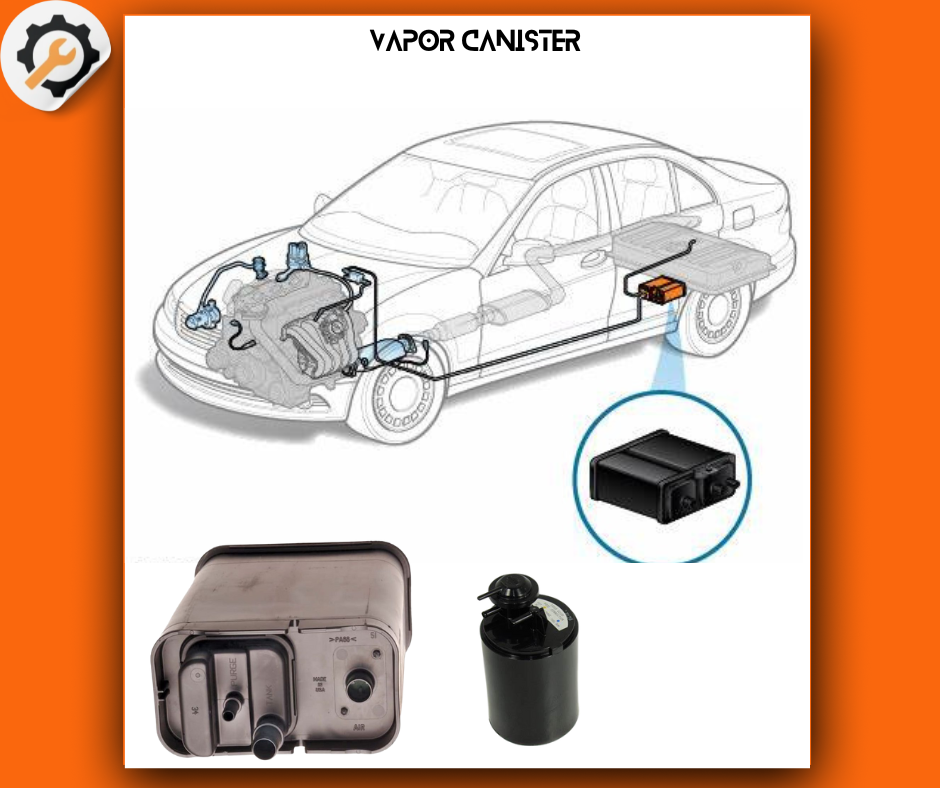The Role of the Vapor Canister in Your Emissions System

The vapor canister may be a small component in your car, but its impact on emissions control and fuel efficiency is significant. This unassuming part is a key player in reducing harmful pollutants, ensuring your vehicle runs cleaner while maintaining peak performance. If you're unfamiliar with the vapor canister and its role in the emissions system, it's time to take a closer look!
What Exactly Does the Vapor Canister Do?
The vapor canister is part of the Evaporative Emission Control (EVAP) system, which is designed to prevent harmful fuel vapors from escaping into the atmosphere. Instead of letting gasoline vapors leak out of your car’s fuel system and contribute to air pollution, the vapor canister captures these vapors, stores them, and then sends them back into the engine to be burned during combustion.
In simple terms, the vapor canister is responsible for:
- Capturing Fuel Vapors: It traps vapors that would otherwise escape from the fuel tank.
- Preventing Pollution: These vapors are then recycled into the engine for combustion, reducing environmental impact.
- Improving Efficiency: By sending fuel vapors back to the engine, it helps increase fuel efficiency and performance.
How Does It Work?
The vapor canister contains activated charcoal, which absorbs and stores the fuel vapors from the fuel tank. When your car is running, these stored vapors are gradually released back into the engine through a purge valve, where they are burned along with the air-fuel mixture. This not only reduces emissions but also improves your car’s fuel economy by making use of otherwise wasted fuel vapors.
Signs of a Failing Vapor Canister
Like any part of your car, the vapor canister can wear out over time. If it becomes clogged or damaged, it can cause a range of problems in both the emissions system and the overall performance of your vehicle. Some signs that your vapor canister may need attention include:
- Check Engine Light: One of the most common symptoms is the dreaded check engine light. If the vapor canister or its related components fail, your car’s computer will detect the problem and trigger the warning light.
- Poor Fuel Efficiency: A failing vapor canister may not allow fuel vapors to be recycled back into the engine, which can reduce fuel efficiency.
- Fuel Odors: If you start smelling gasoline inside or around your car, it could be a sign that your vapor canister is no longer trapping fuel vapors effectively.
- Emissions Test Failure: Since the vapor canister is critical to controlling emissions, a malfunction could cause your vehicle to fail an emissions test.
Why is the Vapor Canister Important?
The vapor canister plays a crucial role in keeping your car environmentally friendly. Without it, fuel vapors would be released into the atmosphere, contributing to air pollution. In addition to helping the environment, a properly functioning vapor canister helps your car meet emissions standards and ensures it runs as efficiently as possible.
Ignoring issues with the vapor canister can lead to:
- Increased Emissions: Which can damage the environment and put you at risk of failing emissions tests.
- Reduced Performance: Without proper vapor recycling, your engine may not run at peak efficiency.
- Costly Repairs: If left unchecked, a faulty vapor canister can cause damage to other parts of the emissions system, leading to more expensive repairs down the road.
Keep Your Emissions System Running Smoothly
Maintaining your vapor canister is just one part of keeping your emissions system in top shape. Regular inspections and addressing any issues early on can save you from bigger headaches later. If you notice any of the warning signs mentioned above, it’s time to get your vapor canister checked.
Looking for the right parts to keep your car’s emissions system in check? At Sparesworld, we offer quality vapor canisters and expert advice to keep your vehicle running efficiently and environmentally friendly.

 Loading..
Loading..